Bang for the Buck: the Best New Personal Watercraft for Tight Budgets
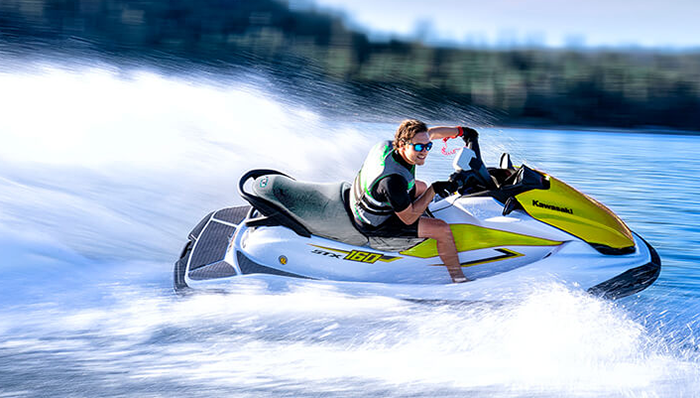
The Most Inexpensive Way To Enjoy The Personal Watercraft Lifestyle From Sea-Doo, Yamaha and Kawasaki
Flagship personal watercraft are popular for good reason. They’re plush, exciting craft to ride and feature all the latest and greatest technology.
There’s a lot to be said, however, for the opposite end of the market. So-called introductory or “Rec Lite” models that focus on affordable fun factor. These type of craft are a great introduction to the sport for those looking to test the waters. They’re also a great addition to a current fleet or addition to a waterfront home. And yes, their lower price tags make them far more affordable to those on tighter budgets.
Curious as to what you can find in the most affordable model from each of the three primary personal watercraft manufacturers? Here are three fun you craft you don’t want to overlook…as well as our suggestions on alternatives that may prove the better investment long term.
Sea-Doo SPARK ($5,999)
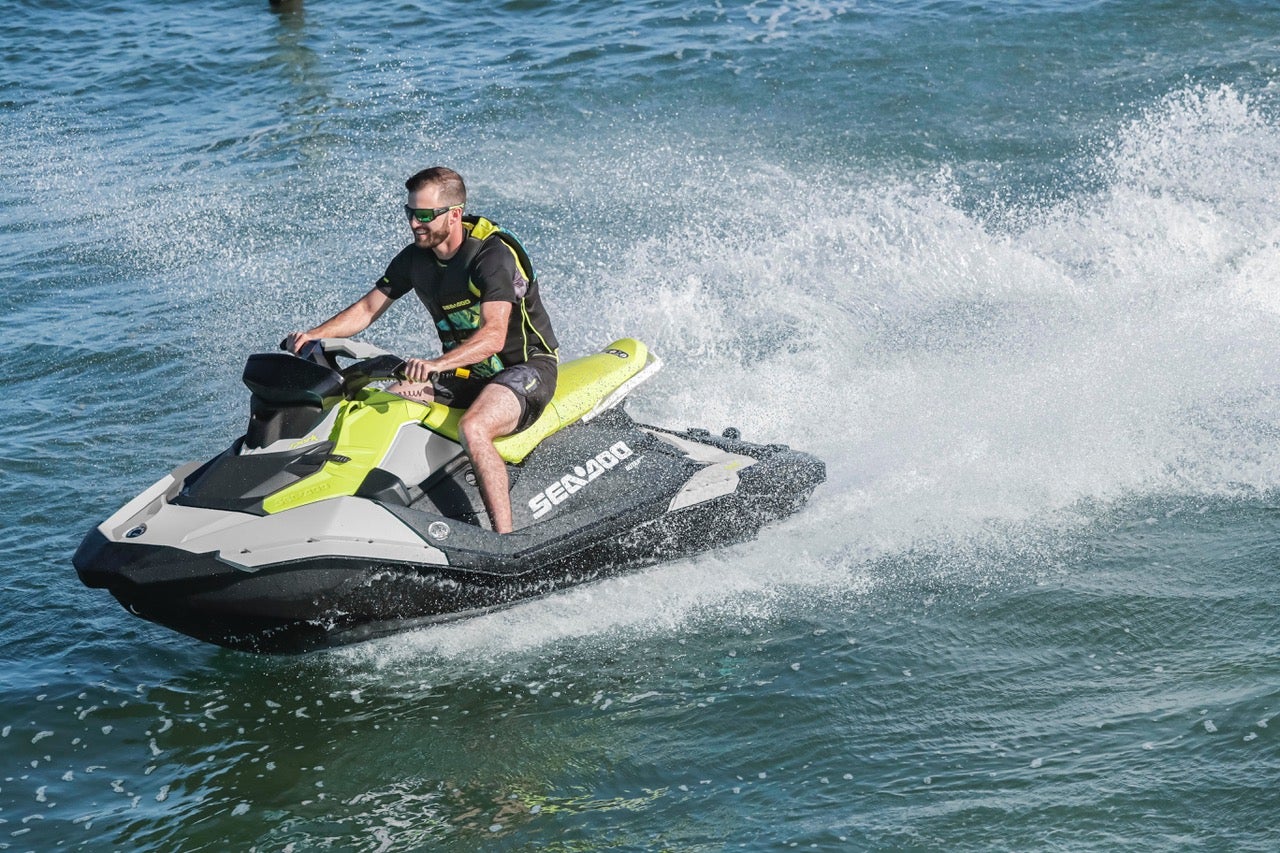
Engine: Four-cylinder 899cc
Fuel Capacity: 7.9 gal.
Stowage Capacity: .42 gal.
Seating Capacity: 2
MSRP: $5,999
Give credit to Sea-Doo for igniting the growth of the recreational segment and offering arguably the most accessible craft on the market. The futuristic-looking, diminutive Spark cost only $4,999 when it made its debut in 2014. And like everything else, of late that price has certainly increased, but the two-seat version of the craft remains the most affordable personal watercraft currently on the market.
The Spark story has been well covered over the years. Sea-Doo came up with a radical new design, produced hull and deck out of a new lightweight composite, offered the craft in bold, fun colors and developed a lower horsepower motor (the Rotax 900 ACE) that could take advantage of the craft’s light weight to still provide adequate performance.
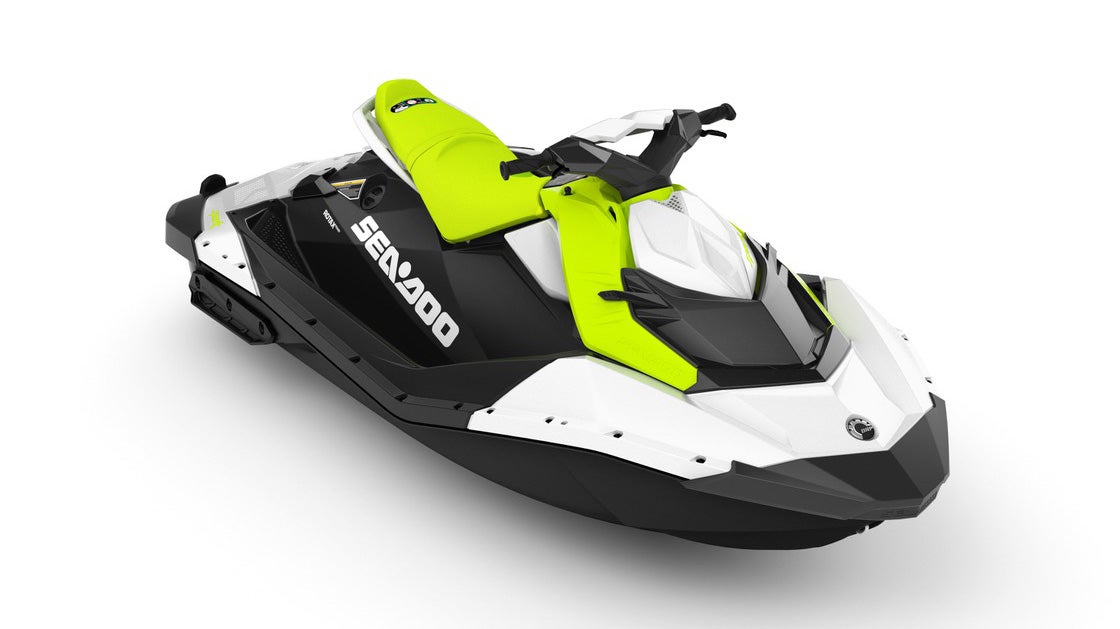
The craft’s personality is old school. While it can definitely track through a turn, the hull is looser than any production model currently available and slides and spins with the tiniest bit of finesse. It’s fun and freestyle-y, a playful model that should appeal to a wide range of ages. With its smaller stature and low horsepower, however, it’s best enjoyed in calmer bodies of water.
Overlooked bonus? At just over 400 pounds, a Spark doesn’t require a beefy tow vehicle to get it to and from the water. Most glaring negative? There’s no reverse in the base format.
More bang for the buck?
Find $1,300 more in your budget and you can upgrade to the Spark 3-up, offering extra length, seating capacity, LinQ storage accessory mounts… and a 90hp version of that same engine that is needed to truly unlock the craft’s playful potential.
Yamaha WaveRunner EX ($7,599)
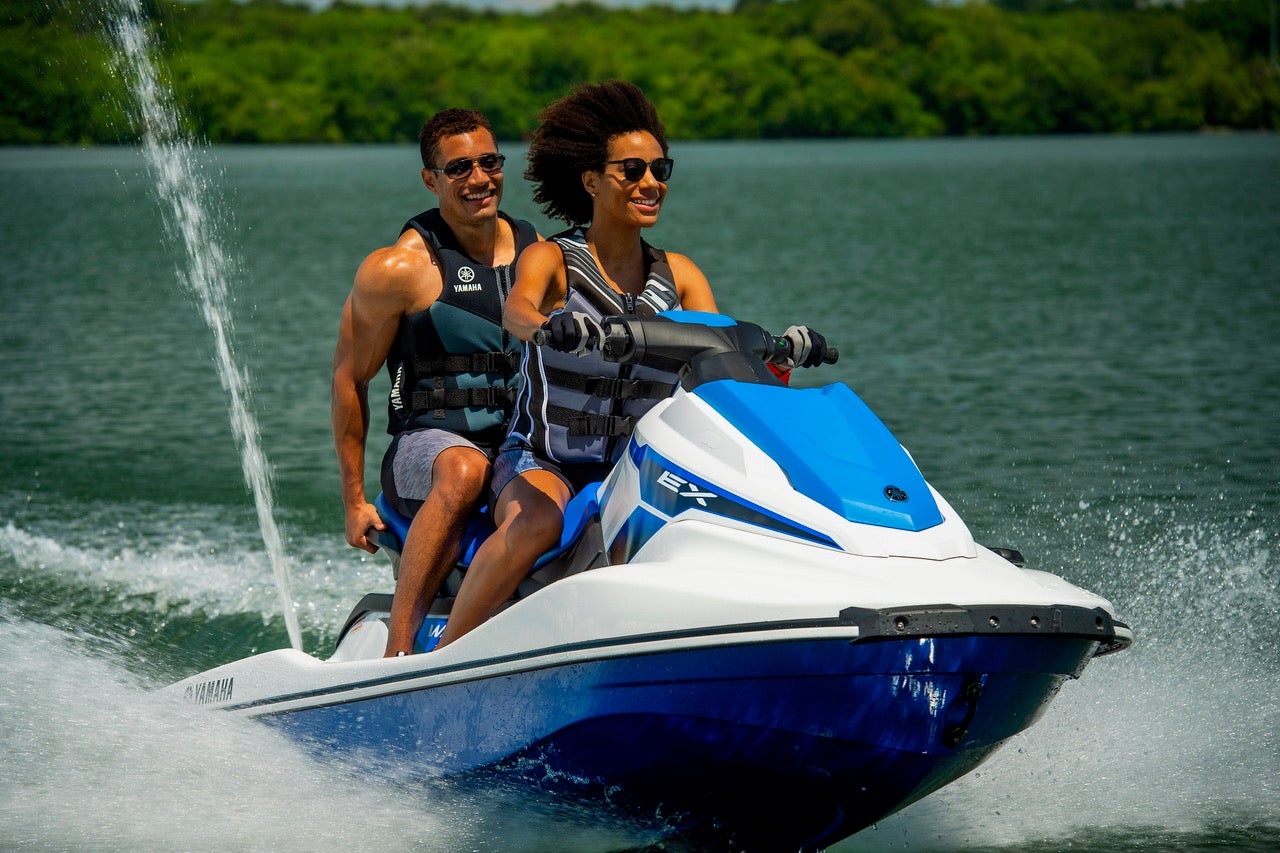
Engine: Three-cylinder 1,049cc
Fuel Capacity: 13.2 gal.
Stowage Capacity: 7.7 gal.
Seating Capacity: 3
MSRP: $7,599
It’s fair to say Yamaha followed Sea-Doo’s lead into the “Rec Lite” category, but the company did it in their own unique fashion. Rather than a two-passenger, composite hull, they opted to keep the EX a three-passenger model made from fiberglass-based SMC. Rather than 60hp, the Yamaha TR-1 engine cranks out closer to 100. Storage, though somewhat minimal at 7.7 gallons, is standard and doesn’t require an add-on module. The EX also offers nearly double the Spark’s fuel capacity.
As to personality, the craft likewise reflects Yamaha’s approach to the market. The larger hull can handle bigger water conditions, haul three passengers (keep in mind that’s a must for towing watersports riders), and offers a more precise ride, tracking more aggressively in turns. Yes, it has more of a playful feel than elsewhere in the Yamaha lineup, but Yamaha opts to give the hull a tighter overall feel than Sea-Doo does with the Spark.
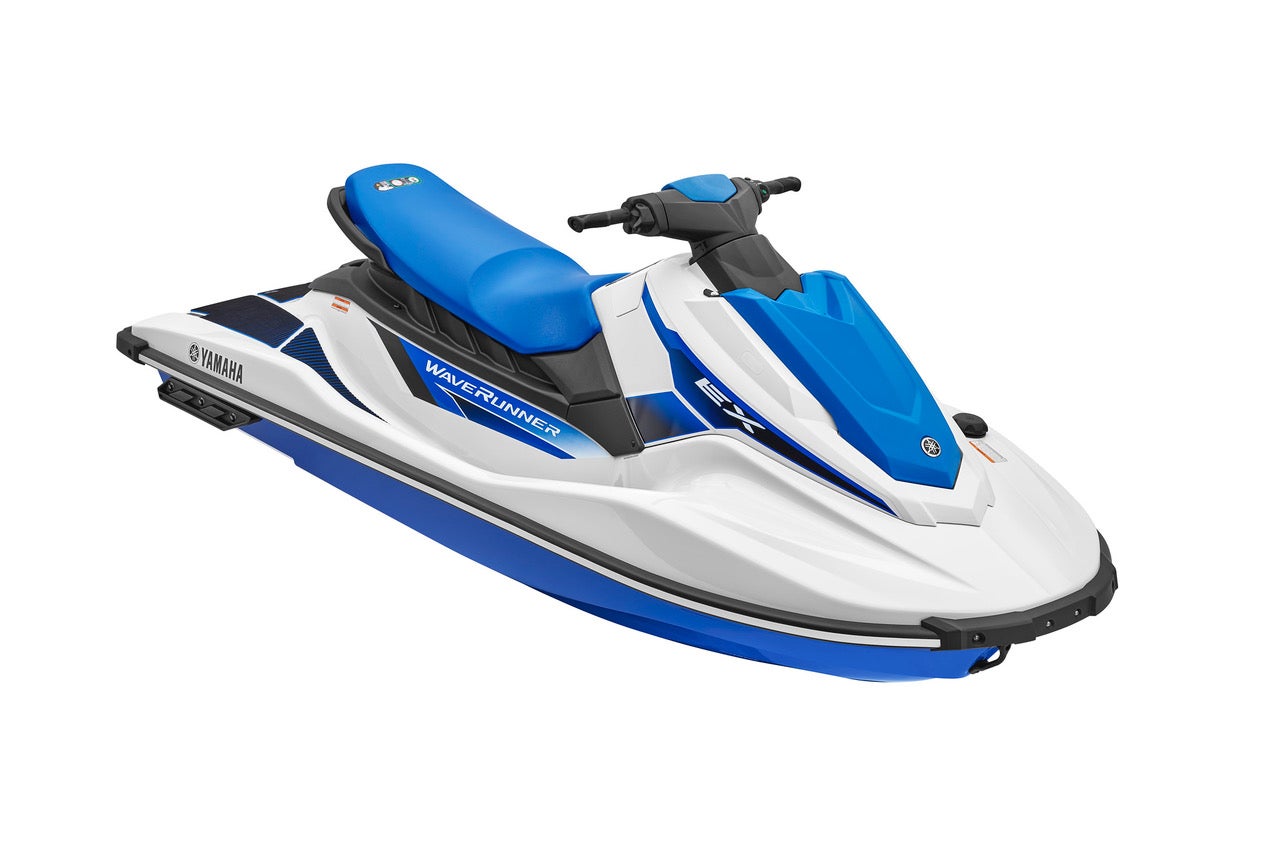
Yes, many of these facts add up to keep pricing higher. The 2023 EX starts at $7,599. But the argument can be made that many Spark buyers would be best served by stepping up to the Spark 3-Up to get closer to the Yamaha’s standard horsepower and passenger capacity. In this comparison, the two craft end up very similarly priced.
More bang for the buck?
The one-step-higher EX Sport is likewise a $1,300 upgrade but it brings a few practical luxuries to the mix. Most notable is mechanical reverse, an addition that provides far superior control around dock or launch ramp. Rearview mirrors and boarding step are also included.
Kawasaki STX 160 ($11,399)
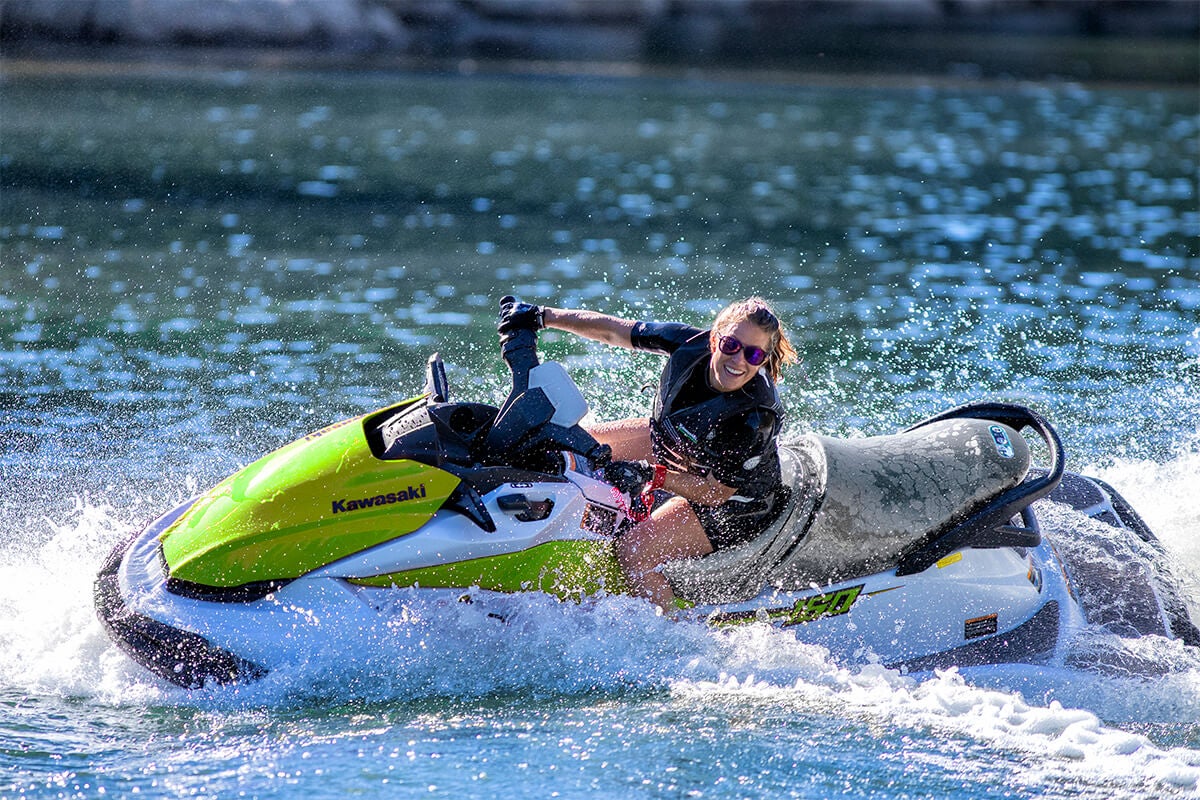
Engine: Four-cylinder, 1,498cc
Fuel Capacity: 20.6 gal.
Stowage Capacity: 35 gal.
Seating Capacity: 3
MSRP: $11,399
Kawasaki is the one remaining manufacturer that doesn’t play in the Rec Lite category. The company’s most affordable sitdown model is the $11,399 STX 160, a craft that competes mostly with its competitors midrange models. Still, as this is the lowest-priced offering from Kawasaki it falls under the outline of this story so we’re including it. Just remember we’re no longer in apples-to-apples territory here.
The STX 160 is a relatively recent addition to the Kawasaki lineup and offered a much-needed refresh. Its advantages for those looking for simply the most affordable model from each manufacturer is that it is simply bigger and better in almost every way. At 124 inches in length and 864 pounds, it’s a roomier model with superior rough-water ability. At 160hp, it provides lots of growing room as your skill and comfort levels increase. Its got impressive capacities, with 35 gallons for storage and over 20 gallons for fuel. And then there are electronic enhancements like cruise control and no-wake mode.
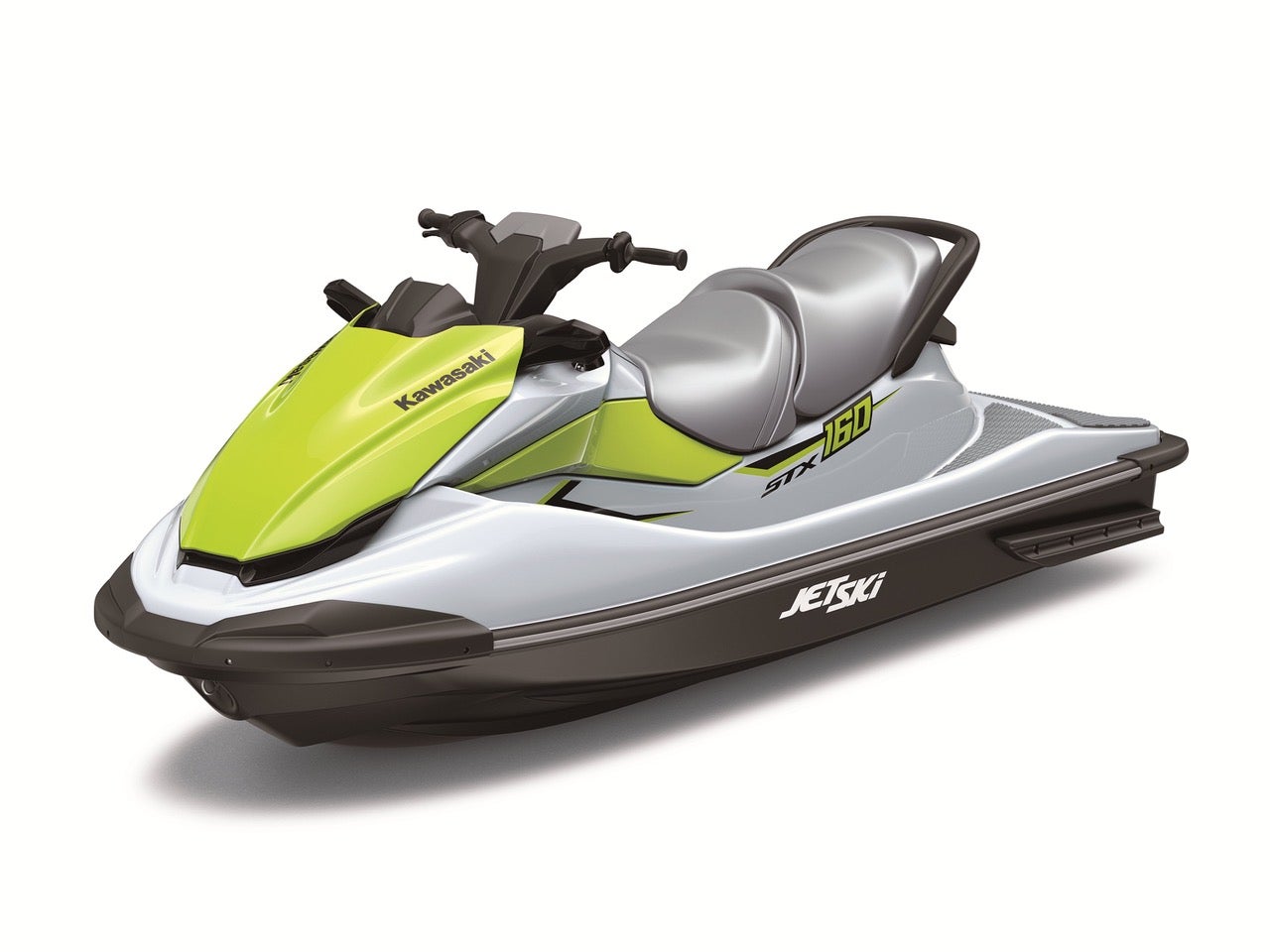
Of course, it will set you back nearly $11,400 so, again, not a fair comparison to the Spark and EX…but certainly worth strong consideration if you find yourself jumping into a whole new category.
More bang for the buck?
Consider available 2022 STX 160s currently on the market. They’re nearly identical and shave $500 off the price tag.
Get PersonalWatercraft.com in your Inbox!
Like PersonalWatercraft.com on Facebook
Comments
Most Popular

2025 Yamaha JetBlaster PRO 2-Up Review

Remembering the Sea-Doo XP

2024 Kawasaki Jet Ski STX 160X Review

2017 Kawasaki Jet Ski Ultra 310LX Review

Whatever Happened to the Wetbike?






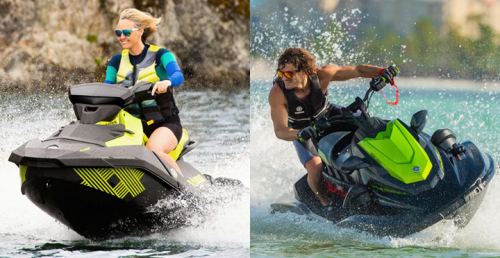






 Your Privacy Choices
Your Privacy Choices